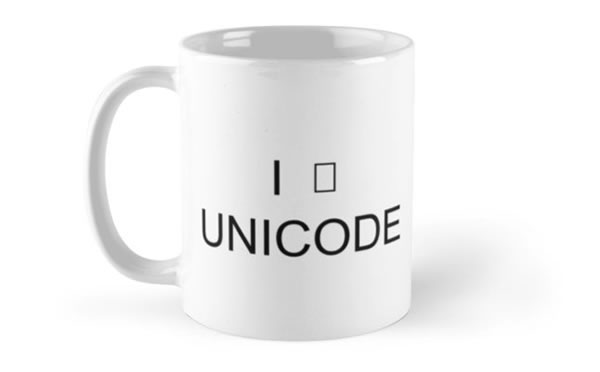Posts
163Following
390Followers
312
Andi Popp 🇺🇦🎗️
AndiPopp@chaos.social
Because it has to be repeated again and again: We need to drastically reduce the number of cars to solve our problems.
Steven Rostedt
rostedt@ljs @joel_linux RCU is simply broken down into three parts:
- grace periods
- quiescent states
- synchronization
A quiescent state is a time or action that guarantees all grace periods that were running at the time of the synchronization have finished (but you do not care about grace periods that started after synchronization).
If a link list protected by disabling preemption, then the grace period is when preemption is disabled, and the quiescent state is when all CPUs have scheduled. So you can remove an item from the link list (where all readers must have preemption disabled to read it), and then wait for all CPUs to schedule which guarantees nothing has access to the item, where you are now free to delete it without worrying that something is reading it.
That’s the simple case. There’s more complex cases, but it all comes down to the three parts above.
David Gerard
davidgerard@circumstances.runFACTS ABOUT MASTODON
If you are curious about leaving the cooked turkey site and going to the elephant site, here are some important tips:
1. It sucks. But then, so does every site.
2. You can still shitpost. Take great glee.
3. Picking your server instance is super important.
Ideally you should start at a large instance, and leave because it's full of white suburban NIMBY reactionaries who joined in November because they were promised 0 uncomfortable experiences in their lives and lash out whenever this turns out not to be the case.
Then you move to a smaller server where suddenly you can't talk to your friends because the admin of your instance is feuding with the admin of their instance. Then you wait a month before you can move again.
In this regard, the feudal structure of Mastodon instances is very like early 2000s message boards, whenever the admin got drunk and deleted the site.
4. You can work around the feudalism by running Mastodon yourself. It's the size of a mastodon and costs a fortune.
You can run Pleroma, which is smaller, and is also favoured by Nazis by unfortunate historical accident. Pleroma is perfectly good software that fulfils a need for something smaller than Mastodon, but also the devs are definitely not Nazis but are the other ten guys at the table.
There was a hilarious moment where the guy behind Spinster was so obnoxious he got kicked out of Pleroma and started his own fork called Soapbox/Rebased. He is now known as Soapbox Terf.
The nice people went to Pleroma fork Akkoma, which Soapbox Terf calls the "tr***y server", a review I understand they were delighted by. Try that.
There's also Misskey, which is a bit weird and Japanese, and supports cat ears right there in the protocol.
5. Any bozo who complains about your posts with assertions about the Fediverse that assume it all runs on the rules of mastodon.social is one of the suburban NIMBYs and invariably joined in November. Block and don't look back.
6. If anyone annoys you about your posting, you can improve their feed for them by blocking them from ever seeing your posts. The blocking tools are marvellous.
7. There are NO QUOTE TWEETS on Mastodon and anyone who wants QUOTE TWEETS is an invader, pollutant and corrupting influence despoiling the suburban vistas of Mastodon who only wants quote tweets so they can wreak EVIL.
So quote-tweeting is well supported in Akkoma and Misskey (and forks thereof), is in the Treehouse fork of Mastodon, and will be coming to more Fediverse software soon.
8. In Mastodon, Eugen Rochko has achieved the creation of something greater than himself. And he will *never forgive it*.
9. The Fediverse interprets Website Boy as damage and routes around him.
10. Mastodon is yet another demonstration that worse is better. So come onto Mastodon, and *be* that worse.
====
EDIT: this post is attracting some very dumb reply guys. Consider *not* posting debate club fatuity.
K. Ryabitsev-Prime 🍁
monsieuriconIf so, I want to talk to you! I have tools that simplify this process quite a bit, but I need more feedback from people who aren't long-term Linux maintainers.
Please reach out, either via here or by emailing mricon@kernel.org.
Toke Høiland-Jørgensen
tokeToke Høiland-Jørgensen
tokeToke Høiland-Jørgensen
tokeRobert McNees
mcnees@mastodon.socialComputer science pioneer and United States Navy rear admiral Grace Hopper was born #OTD in 1906.
As far as I’m aware, she is the only person who has both a supercomputer and a US Navy destroyer named after her.
Image: Computer History Museum
Martin Boller 




itisiboller@infosec.exchange
Shared by my Daughter
"I need privacy, not because my actions are questionable, but because your judgement and intentions are"
In response to "if you have nothing to hide you have nothing to fear"
Toke Høiland-Jørgensen
tokeThe talk is really channelling Stuart Cheshire's classic rant (from 1996!), from which I also shamelessly stole the title: "It's the Latency, Stupid!"
Anyway, the video is now finally online, if you'd care to have a listen: https://videos.ida.dk/id/1_47l9o3qn
Rob Ricci
ricci@discuss.systemsOkay, so let me tell you about my doorbell, from a #networking perspective.
When you push the button by the door, it sends a message over the #zigbee wireless mesh network in my house. It probably goes through a few hops, getting relayed along the way by the various Zigbee light switches and "smart outlets" I have.
Once it makes it to my utility closet, it's received by a Zigbee-to-USB dongle, through a USB hub (a simple tree network) plugged into an SFF PC. From there, it gets fed into zigbee2mqtt, which, as the name implies, publishes it to my local #mqtt broker.
The mqtt broker is in the small #kubernetes cluster of #raspberrypi nodes I run in my utility closet. To get in (via a couple of #ethernet switch hops), it goes through #metallb, which is basically a proxy-ARP type service that advertises the IP address for the mqtt endpoint to the rest of my network, then passes the traffic to the appropriate container via a #linux veth device.
I have #HomeAssistant, running in the same Kubernetes cluster, subscribed to these events. Within Kubernetes, the message goes through the CNI plugin that I use, #flannel. If the message has to pass between hosts, Flannel encapsulates it in VXLAN, so that it can be directed to the correct veth on the destination host.
Because I like #NodeRed for automation tasks more than HomeAssistant, your press of the doorbell takes another hop within the Kubernetes cluster (via a REST call) so that NodeRed can decide whether it's within the time of day I want the doorbell to ring, etc. If we're all good, NodeRed publishes an mqtt message (more VXLANs, veths, etc.)
(Oh and it also sends a notification to my phone, which means another trip through the HomeAssistant container, and leaving my home network involves another soup of acronyms including VLANs, PoE, QoS, PPPoE, NAT or IPv6, DoH, and GPON. And maybe it goes over 5G depending on where my phone is.)
Of course something's got to actually make the "ding dong" sound, and that's another Raspberry Pi that sits on top of my grandmother clock. So to get *there* the message hops through a couple Ethernet switches and my home WiFi, where it gets received by a little custom daemon I wrote that plays the sound via an attached #HiFiBerry board. Oh but wait! We're not quite done with networking, because the sound gets played through PulseAudio, which is done through a UNIX domain socket.
SO ANYWAY, that's why my doorbell rarely works and why you've been standing outside in the snow for five minutes.
Toke Høiland-Jørgensen
toke(Odd that the automatic move thing didn't work)
Toke Høiland-Jørgensen
tokeSpent an hour in the helpdesk queue and all they could tell me was "we'll put it in the queue for our technician". Ugh.
Do I know anyone who can provide me with a temporary BGP session over a tunnel (and reannounce my addresses to their upstream)?
Toke Høiland-Jørgensen
tokeToke Høiland-Jørgensen
tokehttps://ing.dk/artikel/daarlig-koekultur-din-router-flaskehals-din-netforbindelse-263272
Toke Høiland-Jørgensen
tokeWhich is basically the point made in this book: https://www.penguinrandomhouse.com/books/564287/the-peoples-republic-of-walmart-by-leigh-philips-and-michal-rozworski/




